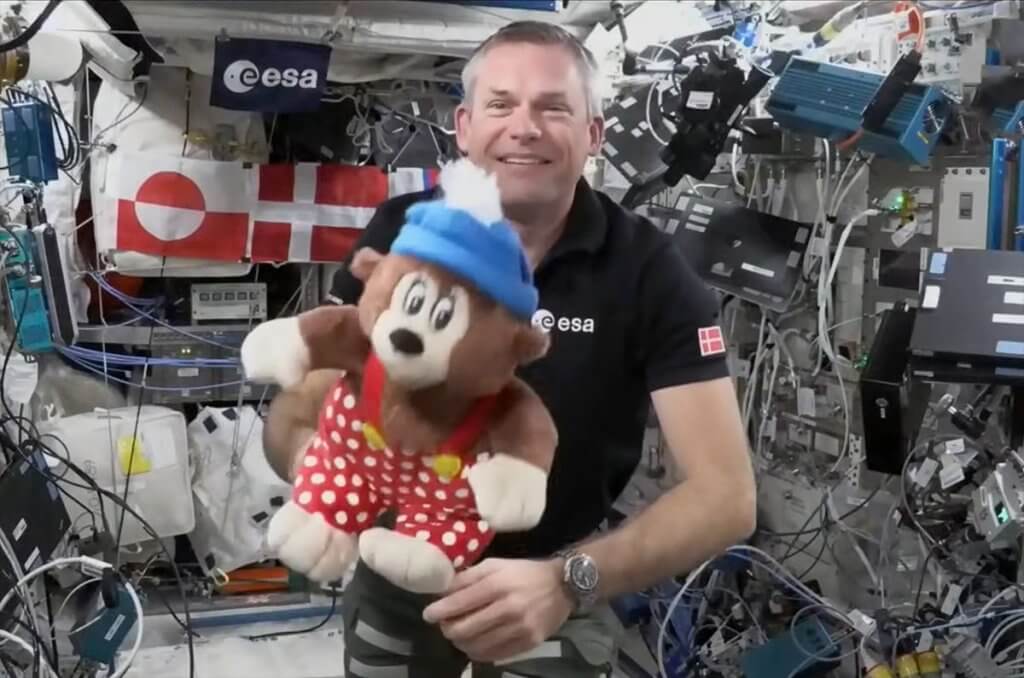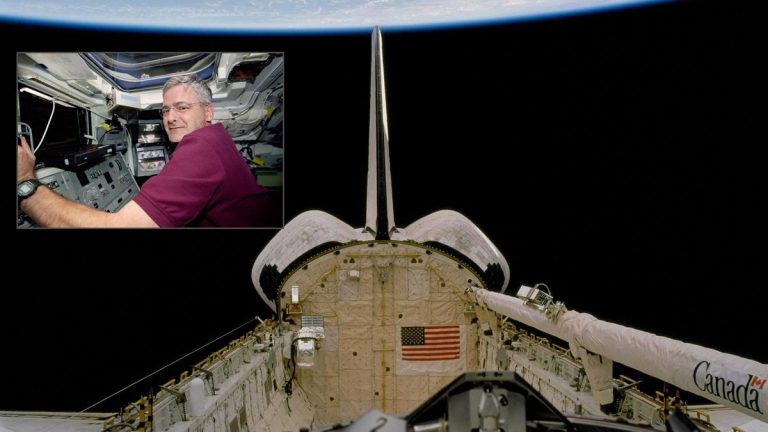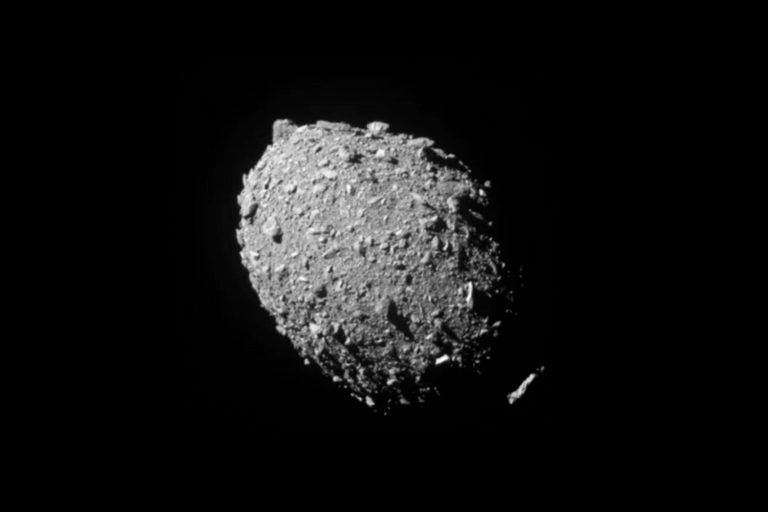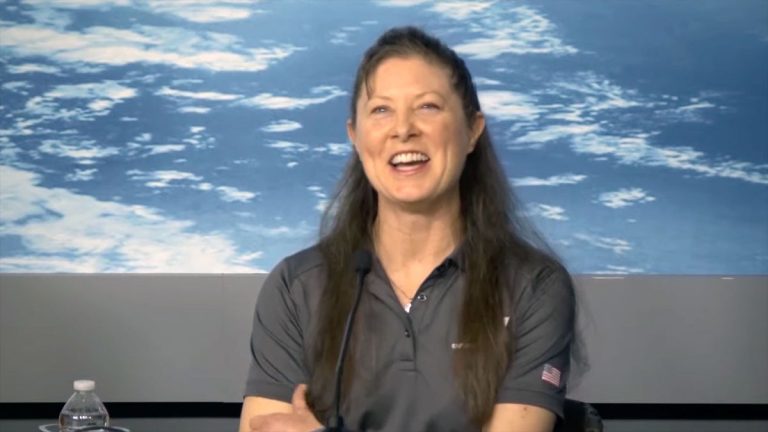
Denmark’s comic strip bear Rasmus Klump takes a spin on the space station (Image Credit: Space.com)
Denmark’s first astronaut marked the midpoint of his second mission on board the International Space Station on Wednesday (Nov. 22) by comparing his zero-g spinning skills against those of another Danish icon.
Andreas “Andy” Mogensen, who this weekend will reach his 90th day out of a planned six-month stay on the space station, took part in a live video downlink with children at the Tivoli Gardens amusement park in Copenhagen. The special event, as organized by the European Space Agency (ESA), was timed to coincide with the 72nd birthday of Rasmus Klump, a popular Danish comic strip character who also is the park’s mascot.
Mogensen flew a plush doll of the bear cub to the station, given that the cartoon figure is “known for being inquisitive and exploring the world, just like astronauts.”
Related: International Space Station — Everything you need to know
“Could you see if Rasmus Klump, the teddy bear, can spin around a little bit? Maybe he’s better than you?” asked Kasper Berthelsen and Søren Storm, the co-hosts of the event and the podcast “Tivolis Store Rumskole” (“Space School”), which has used the park’s attractions to help engage children in what Mogensen has been doing in space.
“Rasmus Klump is doing this very easily up here,” replied Mogensen before setting the toy bear tumbling head over feet inside the space station’s European Columbus laboratory. Moments earlier, Mogensen himself performed a couple of somersaults, although at a much slower pace to avoid disturbing the wires and science equipment lining the module’s four walls.
Created by Carla and Vilhelm Hansen in 1951, Rasmus Klump is distinct from other comic strip bears, given his wardrobe of red dungarees with white polka dots and a blue cap. Also known as “Petzi” in France, Germany and Italy and “Pol” in The Netherlands, he and his friends travel by boat around the world to learn about their surroundings.
“He is like me, curious about the world and always has a friendly and open mind about the people he meets on his adventures,” Mogensen wrote in a social media post that promoted Wednesday’s event.
In addition to performing acrobatics, Mogensen fielded questions from children who were at the park. Among the topics they wanted to know about was if water could be extracted from meteors (asteroids) in space, what Mogensen enjoyed eating on the space station and how the space station came to be in Earth orbit.
“The space station is so big, you cannot send it into space all at once. It was launched piece by piece, and it is 25 years ago this week that the first module or the biggest piece of the space station was sent up here,” said Mogensen, referring to Russia’s functional cargo block (FGB) “Zarya,” which lifted off on a Proton rocket on Nov. 20, 1998.
“So it took about 12 to 13 years to assemble the whole thing and if, though, they say it is done, it is not really done,” he added. “There might be one or two more modules coming up here next year, or in the next couple of years.”

Mogensen was also asked about what led him to become an astronaut.
“When I was in grade four or five, I learned about NASA and the Apollo missions to the moon for the first time. I thought it was so fascinating,” he said. “And I still think one of the most amazing things that humans have done is to land on the moon, open the hatch and get out to explore the unknown. I always thought that was so exciting.”
Ramus Klump was not the only doll that Mogensen launched to the space station. He also flew a plush three-toed sloth, “Sasha,” that his children chose as the “zero-g indicator” for his mission.
Follow collectSPACE.com on Facebook and on Twitter at @collectSPACE. Copyright 2023 collectSPACE.com. All rights reserved.








